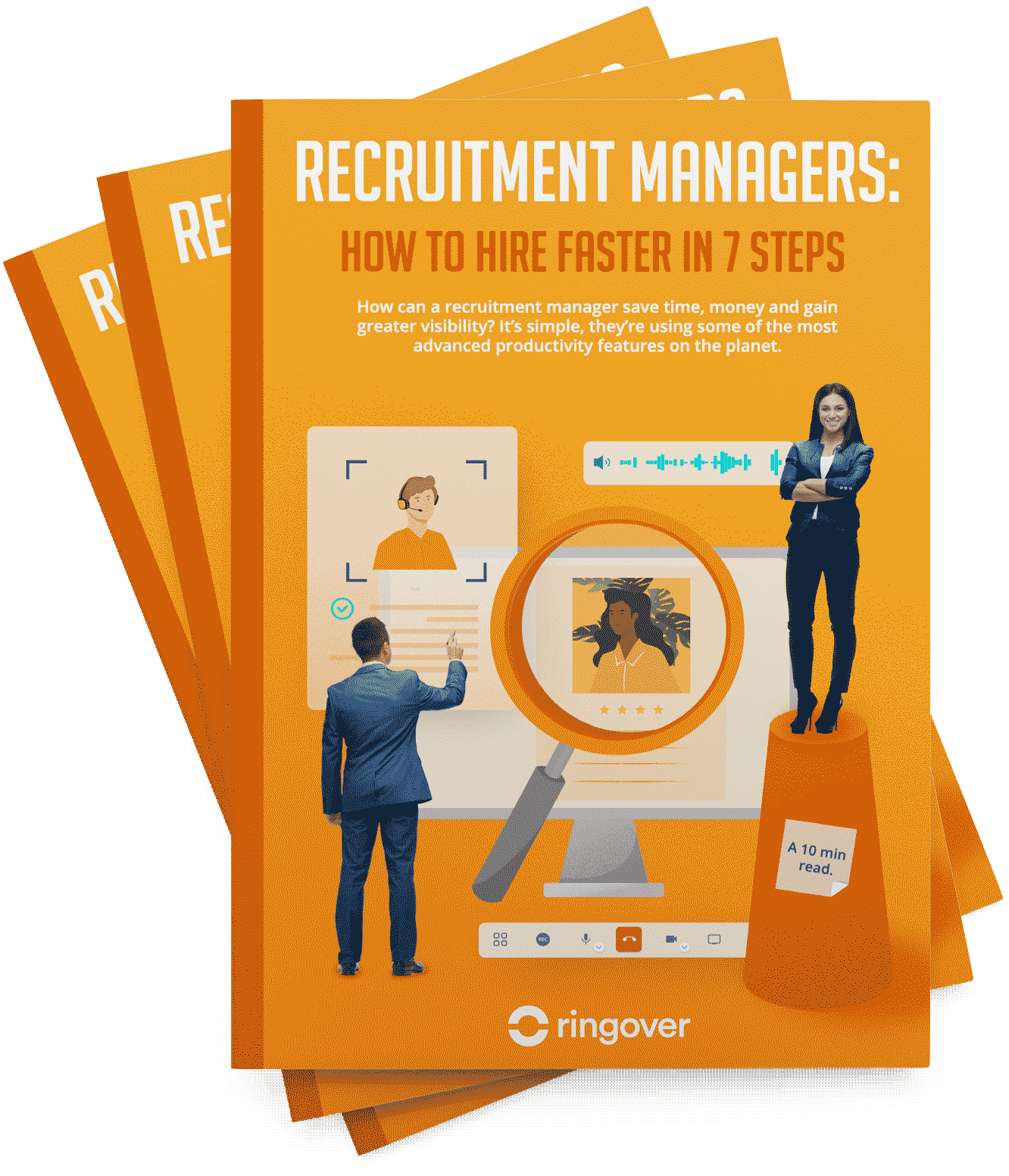Summary
Also referred to as full cycle or life cycle recruitment, this method covers the entire hiring process, from initial planning and sourcing of candidates through to the final onboarding stage.
This comprehensive strategy ensures a smooth and positive journey for all candidates, leading to enhanced candidate experiences and a higher likelihood of securing the perfect match for your organization. But how does this compare to project recruitment? Throughout this article, we'll explore the key differences between end-to-end recruitment and project recruitment, guiding you to identify the most effective approach for your talent acquisition requirements.
End to End Recruitment vs. Project Recruitment: What's the Difference?
In the realm of recruitment, companies often grapple with choosing between two principal strategies: end-to-end recruitment and project recruitment. Grasping the nuances of these approaches is key to refining your hiring process and securing top-notch talent tailored to your needs.
End-to-end recruitment represents a holistic, continuous journey through the entire hiring lifecycle, from strategic workforce planning to the final recruiting onboarding stages. This method suits organizations aiming for an end to end recruitment process that consistently deal with a high volume of job openings, requiring a steady influx of candidates. It fosters a unified and coherent recruitment strategy, ensuring each phase aligns with the company's overarching objectives.
Conversely, project recruitment is designed for targeted, short-term hiring objectives. It's the go-to strategy for companies facing specific, temporary needs for certain roles or skill sets. Project recruitment zeroes in on filling these roles promptly and effectively, making it a time-bound and focused approach.
To adeptly navigate both end-to-end and project recruitment, leveraging tools like Ringover proves invaluable. This VoIP software offers omnichannel communications, allowing you to reach candidates and clients at the right time, on the right channel.
Whether it's conducting videoconference interviews, liaising with hiring managers, or engaging with candidates, Ringover ensures each interaction is seamless and professional. Offering many integrations, including with popular ATS like Bullhorn and Vincere and CRMs like Hubspot and Salesforce, Ringover significantly increases efficiency.
In addition to providing a variety of powerful IP telephony features like click-to-call, call recording, transcription, text messaging, and more, Ringover offers a comprehensive analytics dashboard so you can easily track your recruitment KPIs
What Is Meant By End to End Recruitment?
End-to-end recruitment emphasizes an uninterrupted and integrated end to end recruitment process. The six steps cover all phases of the hiring process, ensuring a seamless and efficient candidate journey.
- The recruitment process kicks off with preparation and planning. During this phase, the recruitment team identifies the ideal candidate profile and prepares a comprehensive job description. This step is fundamental in attracting suitable candidates and ensuring they align with the company's objectives and culture.
- Following this, the candidate sourcing stage utilizes both internal and external channels. Internal methods include employee referrals and promoting from within, whereas external sourcing taps into online platforms, job boards, and social media recruiting to find potential candidates.
- The screening and shortlisting phase is next, where applications are evaluated to select the most fitting candidates. This can be conducted manually or with the help of Applicant Tracking Systems (ATS) for a more automated approach.
- During the selection phase, candidates undergo in-depth interviews and assessments to gauge their compatibility with the role. This might involve behavioral interviews, technical assessments, and other evaluations to ensure a match in skills and company culture.
- Once the ideal candidate is chosen, the hiring phase begins, where job offers are made and employment terms are negotiated. This covers aspects like job duties, work hours, salary, and benefits.
- The final step is onboarding, which is essential for integrating the new employee into the company smoothly. It includes team introductions, orientation, and training sessions to equip the new hire for success.
Adopting an end-to-end recruitment approach not only eases talent management but also enhances the candidate experience, essential for building a strong employer brand and attracting top talent in the future.
What Are the e2e Recruitment Processes?
An effective end to end recruitment process encompasses a comprehensive and structured approach, ensuring meticulous management across all hiring stages. Below are the essential steps of an end-to-end recruitment process:
1. Preparation and Planning
At the outset, this phase entails crafting a detailed job description and candidate persona, highlighting not just the role's requirements but also the company culture, benefits, and perks to attract suitable candidates. This foundational step is essential for clearly defining the ideal candidate.
2. Sourcing Candidates
Candidate sourcing leverages both internal and external channels. Internally, this may involve promotions and employee referrals, while externally, it could mean tapping into social media, job boards, and networking to unearth passive candidates. The objective here is to amass a diverse pool of candidates that meet the organization's needs.
3. Screening and Shortlisting
Following sourcing, the next phase is to screen and shortlist applicants. This can be executed manually with resume parsing tools or through an Applicant Tracking System (ATS) to streamline the process. The goal is to filter down to candidates who not only meet the job requirements but also align with the company culture.
4. Selecting and Interviewing
Selection and interviewing involve comprehensive interviews and assessments to identify the best match for the position. This stage may include standard interview questions, unique hiring inquiries, and various evaluations like technical tests, cognitive assessments, and personality tests, aimed at gauging both technical abilities and cultural fit.
5. Hiring and Negotiation
Upon identifying the ideal candidate, the next step is to make a job offer, detailing the role, compensation, benefits, and other relevant information. Be ready for negotiations to ensure the candidate is on board.
6. Onboarding
The onboarding phase is critical for integrating the new employee into the company, involving team introductions, orientation, and training to prepare them for success. A well-executed onboarding process is key to reducing turnover and setting the new hire up for success.
These interconnected stages are essential for ensuring the seamless hiring and integration of the right talent into the organization.
Whether you’re working with an end to end or project recruitment strategy, Ringover will ensure you connect with clients and candidates efficiently and easily thanks to omnichannel contact center software.
What is the meaning of project recruitment?
Project recruitment represents a targeted approach to hiring, focusing on the selection and onboarding of candidates for particular projects within an organization. This method diverges from the continuous nature of traditional recruitment, aiming instead to fulfill the distinct requirements of a specific project, complete with its own objectives and deadlines.
This strategy is particularly valuable for organizations embarking on time-sensitive ventures, such as the launch of a new product, geographic expansion, or addressing a seasonal increase in demand. By employing project recruitment, organizations can ensure they have the necessary blend of talent, competencies, and experience to achieve project success.
The project recruitment process unfolds in several key phases. It begins with a thorough understanding of the project's goals, schedule, budget, and the specific capabilities and qualifications required for the roles. This foundational knowledge is usually acquired through discussions with project managers and other pivotal stakeholders.
Following this, job advertisements are disseminated across a variety of channels, including online job boards and social media, to attract a broad pool of applicants. Additionally, recruitment agencies and professional networks might be utilized to pinpoint appropriate candidates.
Candidates that emerge from this outreach are then subjected to a screening process, which involves preliminary interviews and assessments to verify their suitability for the project's demands. This stage is succeeded by more comprehensive interviews and evaluations to ascertain the most fitting candidates for the role and the organization.
The concluding phase of the process involves making a job offer to the selected candidate, coupled with negotiations concerning salary, benefits, and any project-specific terms of employment.
Project recruitment is lauded for its cost-effectiveness, ability to scale quickly, and facilitation of access to niche skills. It further offers professionals the flexibility to engage in work that matches their skills and preferences.
In essence, project recruitment serves as a precise and effective method for assembling the ideal team for specific projects, guaranteeing that each initiative is equipped with the right personnel to meet its objectives.
Conclusion
In summary, it's essential to grasp the distinctions between end-to-end recruitment and project-based recruitment to refine your hiring strategies. End-to-end recruitment provides a comprehensive solution, covering every phase from sourcing candidates to their onboarding, ensuring a smooth transition at each step. On the other hand, project recruitment is tailored for specific, time-sensitive tasks. It's important to note that each method offers unique advantages and can be customized to suit the particular requirements of your organization.
Utilizing efficient communication tools like Ringover and prioritizing a positive experience for candidates can significantly improve your recruitment efforts. If you're eager to see Ringover can bring to your recruiting and staffing teams, start your free trial today!
End to End Recruitment FAQ
What is the TAM process in HR?
The TAM process stands for The Applicant Manager process, which is a systematic approach to managing the entire recruitment journey as defined by The Applicant Manager. It encompasses six essential phases: Preparation and Planning, Sourcing Candidates, Screening, Selecting, Hiring, and Onboarding. This methodology aims to streamline and enhance the recruitment experience from crafting the initial job posting to welcoming the new employee onboard.
What is the rule of three in recruiting?
While the rule of three in recruiting isn't universally established, it's often interpreted as the practice of aiming to have at least three strong candidates in the running for any position. This approach helps ensure a diverse pool of qualified candidates, improving the likelihood of finding the perfect match for the job. The specifics of this rule can vary based on the recruitment strategies of each organization.
What is the recruitment cycle?
The recruitment cycle, or end-to-end recruitment process, spans all the steps involved in hiring, from recognizing the need for a new team member to the successful onboarding of the selected candidate. It includes stages such as preparation and planning, sourcing candidates, engaging and nurturing talent, screening and shortlisting, selecting and interviewing, extending job offers, and onboarding. Each phase is critical to ensure an efficient end to end recruitment process and the recruitment of the right candidate who fits seamlessly into the organization.




